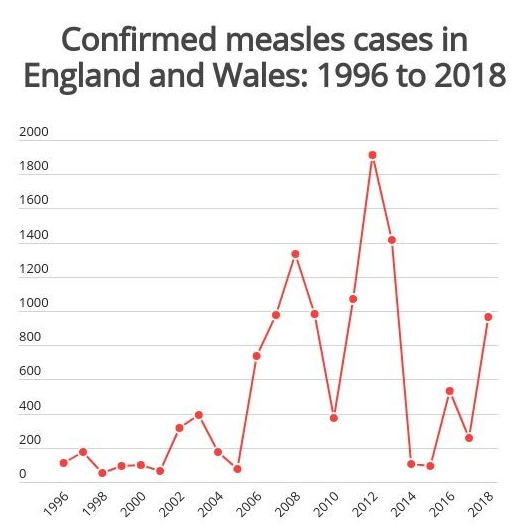The threat of disease – Ignore science at your peril
By Dr. Karen Scott, University of Aberdeen
We live in an age when life expectancy has increased and many diseases that used to be fatal are curable. Much of this is the result of years of efforts by dedicated scientists, painstakingly working out the causes of diseases, and then the best way to treat or prevent them. Yet the high profile of social media can boost the profile of results from poorly conducted studies, sometimes even beyond the publicity received by the original seminal results. Responsible scientists are partly to blame for this. We are a cagey bunch, frequently suffixing stories about our wonderful successes with caveats, maybes and the recurring refrain “more research is needed”. Those spreading sensationalist publicity have no such qualms.
Take vaccination for diseases caused by viruses. In 1796, Dr Edward Jenner realised that milk parlour girls did not seem to get small pox and theorised that they were protected from the devastating disease due to their continual exposure to the less dangerous cow pox virus. He proceeded to prove his theory by inoculating many people with cow pox, and then exposing them to the small pox virus. Although the experiment would nowadays perhaps be considered unethical, it worked and people infected with cow pox did not get small pox. This heralded the start of vaccination, a huge medical advance that has since protected millions of people from contracting polio, measles, mumps, rabies, tuberculosis and many more devastating diseases. In the 19th Century, Louis Pasteur advanced the method, using inactivated viruses as the inoculation. Vaccination has been so successful that small pox was ‘officially’ eradicated globally in 1979, and the polio vaccine, which was developed in 1955, has led to the virtual world-wide elimination of polio.
But more and more people people are declining to vaccinate their children. The very success of the vaccination scheme may be why it is now in danger. People have forgotten the devastating consequences and lasting effects of these diseases. In the western world it is now unusual to see people crippled by the effects of childhood polio. What about measles? Prior to vaccination, measles was a highly contagious disease, spreading through water droplets in air when an infected person sneezed. Forty percent of those with measles develop complications including pneumonia (which is often the case of measles-related deaths), deafness, blindness and encephalitis (brain swelling), which can even cause brain damage. If the patient survives, the effects of such complications can last for life. Yes – measles, a disease fully preventable by vaccination, kills. I was struck by a recent story about Roald Dahl, whose daughter sadly died after contracting measles when she was seven (see here). In 1986 Roald Dahl wrote an open letter describing his experience, encouraging people to vaccinate their children. The post was illustrated with a picture of a ward full of children suffering from polio, all confined in iron lungs as their breathing had been so badly affected due to paralysis of their chest muscles. No one can want to return to that.
Another contributor to reduced vaccination rates are reports that vaccinations cause more harm than good. Such reports are sustained in part by non-science-based social media claims. Even when original scientific reports are discredited, many parents continue to decide not to vaccinate their children.
How will these “anti-vaccination” parents/carers feel, sitting at the bedside of their critically ill child trying to make sense of the doctor’s explanation that even if their child pulls through, they will never be able to see again? Or explaining to their grown up child that he will never be able to father children due to an almost forgotten childhood disease? All because Mum and/or Dad paid more attention to a campaign on social media with no scientific basis, than to medical advice supported by decades of evidence? Yes, there are instances of people becoming ill with the diseases themselves, or suffering rare side effects of vaccination, but these are rare and pale in comparison to the morbidity and mortality prevented by vaccinations. After all, these same people do not stop driving their car to work when they hear that someone else had an accident doing so. The huge decline in epidemics of viral diseases following the introduction of vaccination programmes speaks to their effectiveness. The vaccine for measles was introduced in 1968 and is estimated to have prevented 20 million cases of measles and 4,500 deaths. In fact the vaccination programme was so successful that it led to the UK being declared ‘measles free’ in 2017.


Source – Public Health England; University of Oxford Vaccine Knowledge Project
Yet countries that we travel to on holiday still have measles outbreaks so it is still crucial to get children vaccinated. Even in the US and UK, the large increase in non-vaccinated children means that measles outbreaks (starting with people catching the disease abroad) are becoming more common – evidenced by the second graph above. An alarming statistic is that there are more cases of measles in 2018 than there were in 1998.
Increased numbers of unvaccinated people pose a threat to society at large. Herd immunity can protect a small number of unvaccinated individuals. Indeed, some individuals cannot be effectively vaccinated, including very young infants or when there is a problem with their immune system. But when the number of unvaccinated people rises, these viruses can ‘find’ susceptible hosts and take root once again in the population. This puts our most vulnerable society members at risk. The decision to not immunize is not a victimless decision. We need to maintain vaccination programmes on a global scale, to maintain ‘herd immunity’ and halt the current increase in the numbers of cases occurring.
Bottom line – vaccination works and prevents needless suffering from preventable diseases.





